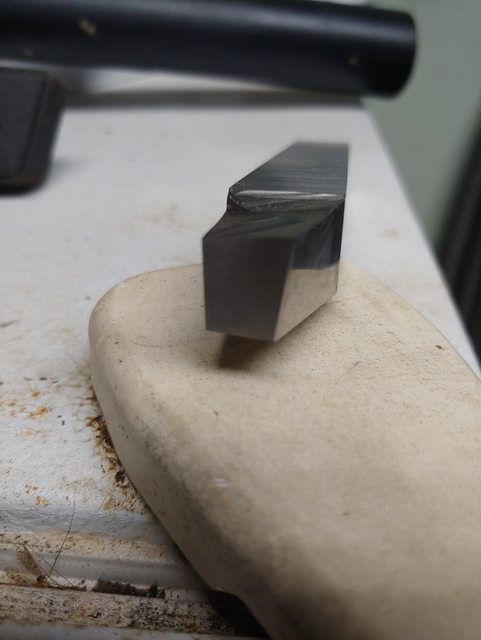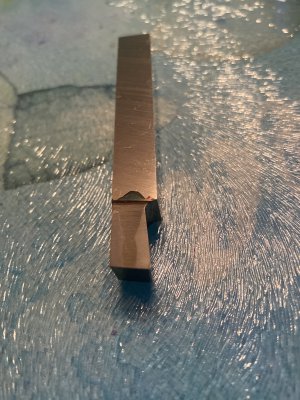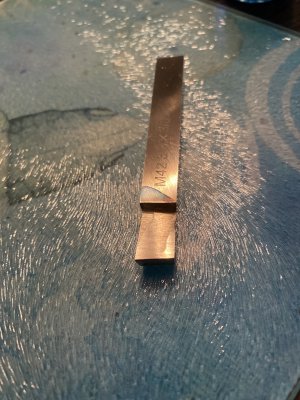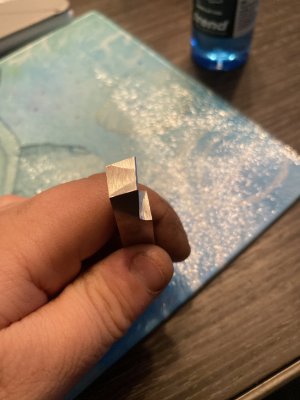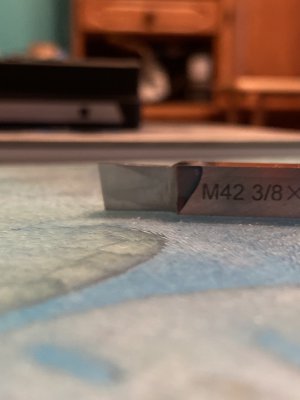-
Welcome back Guest! Did you know you can mentor other members here at H-M? If not, please check out our Relaunch of Hobby Machinist Mentoring Program!
You are using an out of date browser. It may not display this or other websites correctly.
You should upgrade or use an alternative browser.
You should upgrade or use an alternative browser.
Models for grinding HSS Lathe Tools
- Thread starter mikey
- Start date
- Joined
- Jan 29, 2017
- Messages
- 311
If you want to angle that face in you can, all your doing is grinding away a lot more material than with the conventional tool.
I would like to see more of a radius on the cutting tip though as this strengthens the cutting edge and it will last longer. Also, the smaller you go on radius the greater the chance of stress cracks developing if there is a significant amount of load on the part.
The tools you grind will be for a specific profile you wish to turn on your work, apart from the basic tools of turning, parting etc.
As long as you have the requisite clearances and rakes you can't go wrong.
Get cracking.
I would like to see more of a radius on the cutting tip though as this strengthens the cutting edge and it will last longer. Also, the smaller you go on radius the greater the chance of stress cracks developing if there is a significant amount of load on the part.
The tools you grind will be for a specific profile you wish to turn on your work, apart from the basic tools of turning, parting etc.
As long as you have the requisite clearances and rakes you can't go wrong.
Get cracking.
Last edited:
I think your tooling needs a completely STRAIGHT TOP edge on the side clearances. I see some rounding. Its a very tricky grinding of the tooling. Its hard for me to put this in words. That inside grind not only needs clearances on the leading edge but needs a little clearance from leading edge and a little towards the QCTP. So not a straight and flat grind but give it a little relief so its fatter at the tip and the thinner leading to the QCTP. Thats in addition to the 5 degree normal relief we always hear about. I would want the 5 degree side relief plus a little relief so the tip is also fatter than the body heading inwards. I'm absolutely no expert. But I tried a little trepanning a while back and if the tool grind is the slightest bit off.... I had a rubbing issue. I would suggest grind it and then paint it with some magic marker. try it....then hone it with a diamond hone to get it so only the top of the front of the tooling is touching. Pay attention for any rubbing of the side of too...not just at the front tip. You want contact ONLY at the top and front tip cutting edge.
Last edited:
Today i ground my facing/turning tool at work and then tonight i honed the radius and the edges. She feels pretty sharp. I will use this for finishing most likely. But we will see. I may still have to twist my tool post block to make it work on bigger diameters but we will see.
Attachments
- Joined
- Apr 23, 2013
- Messages
- 1,003
I ran production runs of trepanned parts out of tool steel and ground all the tools by hand. Hundreds of them Each run.View attachment 379107View attachment 379108View attachment 379109
I'm still getting a little chatter, but it's much improved. I didn't hone it much for this test, so I'll do that as well.
I went back and watched a video from Joe Pieczynski's channel and got a good tip that helped a fair bit, keep pressure on the handwheel. It chatters more with lighter pressure, keeping the tool tip buried in the work helped. I'm sure pulling it back into the holder helped as well.
The biggest change in the grind was to taper from the front cutting edge. I had intended that, but didn't get enough. I also ground a steeper angle on the outside.
Thanks for the suggestions!
I ran production runs of trepanned parts out of tool steel and ground all the tools by hand. Hundreds of them Each run.
Thanks for the idea! I'll try running upside down from the back next time.
- Joined
- Oct 4, 2016
- Messages
- 7,012
I decided to try to shape a GP tool with a 5/8 Wesson Tantung "G" blank. I'm trying 12* for now since it is a hard but brittle material, my CBN wheel, and belt grinder got a workout, then I got a work out on the diamond lapping plates. I was not getting good results taking pictures so this is what I got,
